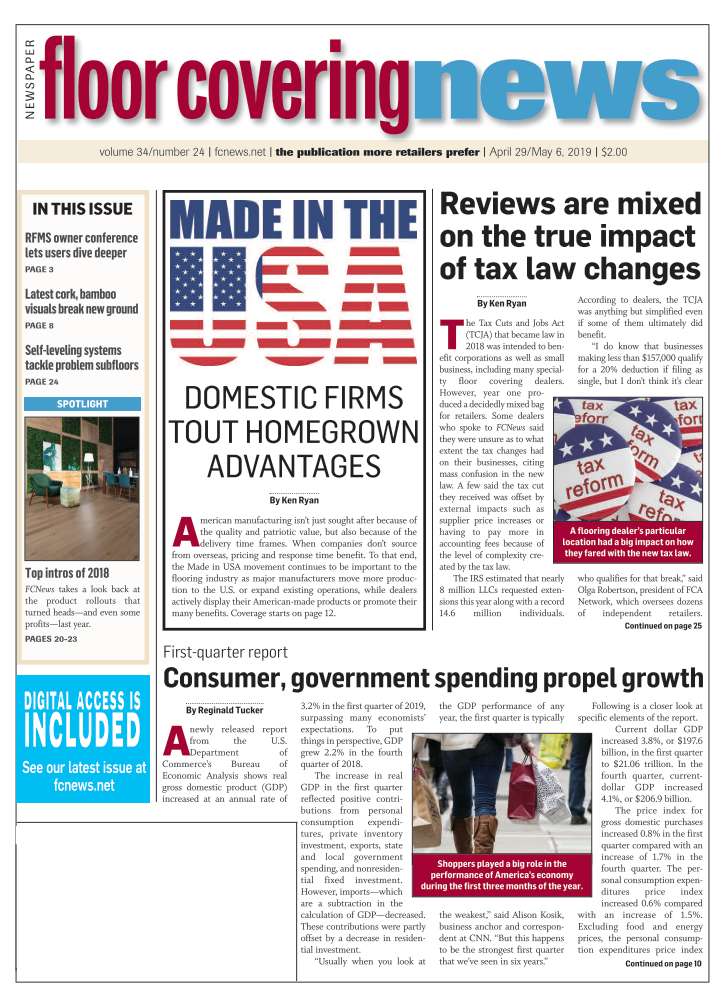April 29/May 6, 2019: Volume 34, Issue 24
By Roman Basi
 It’s been over a year since the Tax Cuts and Jobs Act (TCJA) passed, and the IRS is providing the final pieces of clarity for the infamous section 199A deduction, which allows owners to avoid paying tax on 20% of the qualified business income. This article addresses another component of the 199A deduction—rental real estate enterprises.
It’s been over a year since the Tax Cuts and Jobs Act (TCJA) passed, and the IRS is providing the final pieces of clarity for the infamous section 199A deduction, which allows owners to avoid paying tax on 20% of the qualified business income. This article addresses another component of the 199A deduction—rental real estate enterprises.
The IRS in Notice 2019-7 states a rental real estate enterprise—whose primary form of income based on rental properties—will be treated as a trade or business solely for purposes of section 199A. The courts have often found there is a simple test whether a taxpayer’s activity qualifies to meet the level that constitutes a trade or business, the test being: regular and continuous conduct of the activity, which depends on the extent of the taxpayer’s activities; and a primary purpose to earn profit, which depends on the taxpayer’s state of mind and good faith intention to make a profit from the activity. By meeting these requirements with your rental property, you should be in line for the 20% qualified business deduction.
Additionally, it will be imperative the taxpayer meet the IRS’s definition of rental real estate enterprise in order to qualify for the safe harbor. Per the IRS, the definition is, “an interest in real property held for the production of rents and may consist of an interest in multiple properties.” For consistency sake, the IRS has decreed taxpayers must either treat each individual rental property as a separate enterprise, or treat all of them as a single enterprise. However, commercial and residential real estate may not be part of the same enterprise. Finally, taxpayers may not pick and choose enterprise variations year by year unless there is a drastic change in facts surrounding the properties.
For the sole purpose of section 199A, a rental real estate enterprise will qualify for the 20% qualified business deduction if the following are met within that taxable year:
1. Separate books and records are maintained to reflect income and expenses for each rental real estate enterprise;
2. For taxable years beginning prior to January 1, 2023, 250 or more hours of rental services are performed per year with respect to the rental enterprise. For taxable years beginning after December 31, 2022, in any three of the five consecutive taxable years that end with the taxable year (or in each year for an enterprise held for less than five years), 250 or more hours of rental services are performed per year with respect to the rental real estate enterprise;
3. The taxpayer maintains contemporaneous records, including time reports, logs or similar documents, regarding the following: hours of all services performed; description of all services performed; dates on which such services were performed; and who performed the services. Such records are to be made available for inspection at the request of the IRS. The contemporaneous records requirement will not apply to taxable years beginning prior to January 2019.
If you have questions about what qualifies as a rental service, following is a list of services the IRS has deemed as rental services: advertising to rent or lease the real estate; negotiation and executing leases; verifying information contained in prospective tenant applications; collection of rent; daily operation, maintenance and repair of the property; management of the real estate; purchase of materials; and supervision of employees and independent contractors.
But there are some exclusions. Real estate used by the taxpayer (including owner or beneficiary) as a residence is not eligible for the 199A deduction. Neither is real estate rented or leased under a triple net lease.
Roman Basi is an attorney and CPA with the firm Basi, Basi & Associates at The Center for Financial, Legal & Tax Planning. He writes frequently on issues facing business owners.

